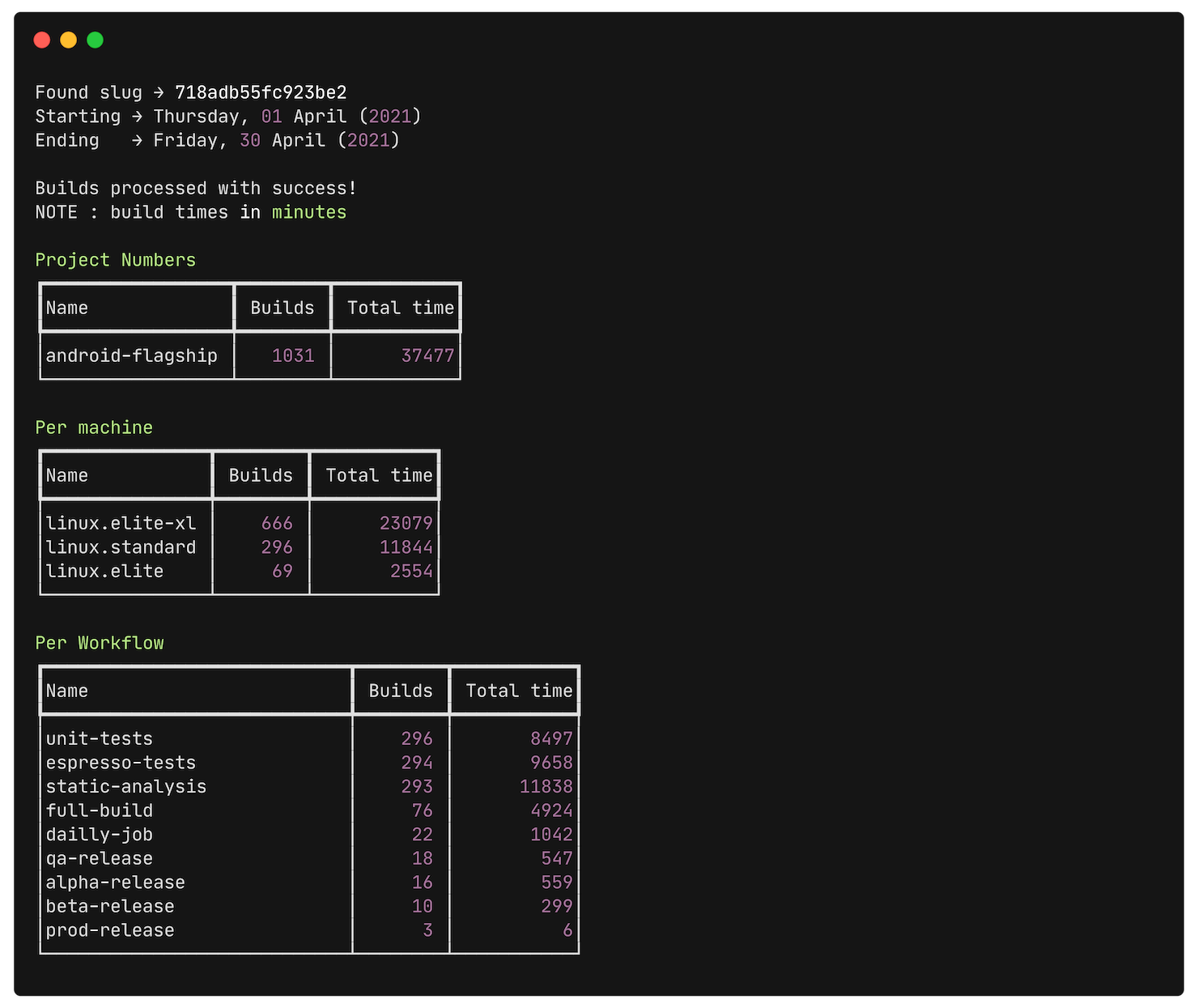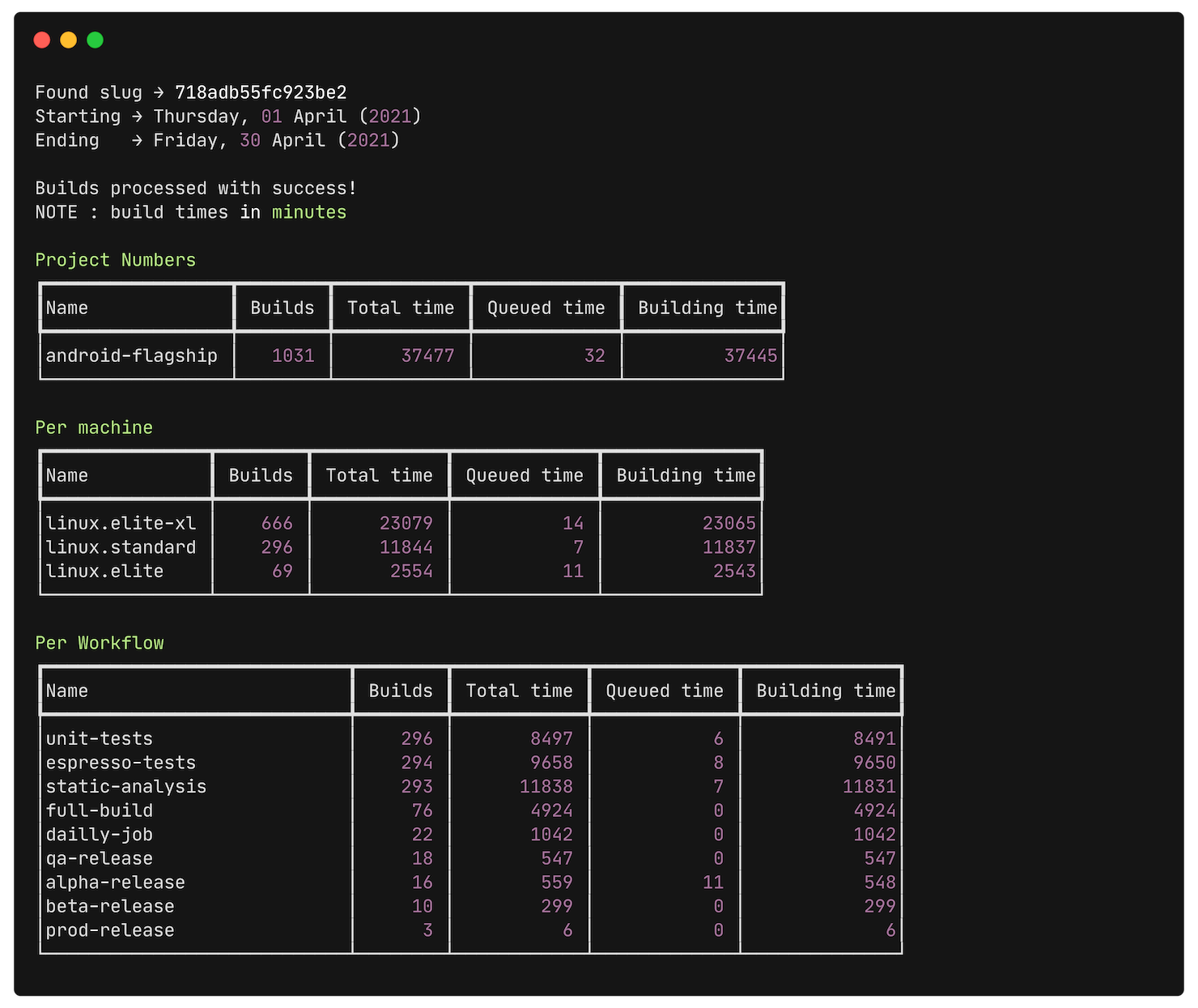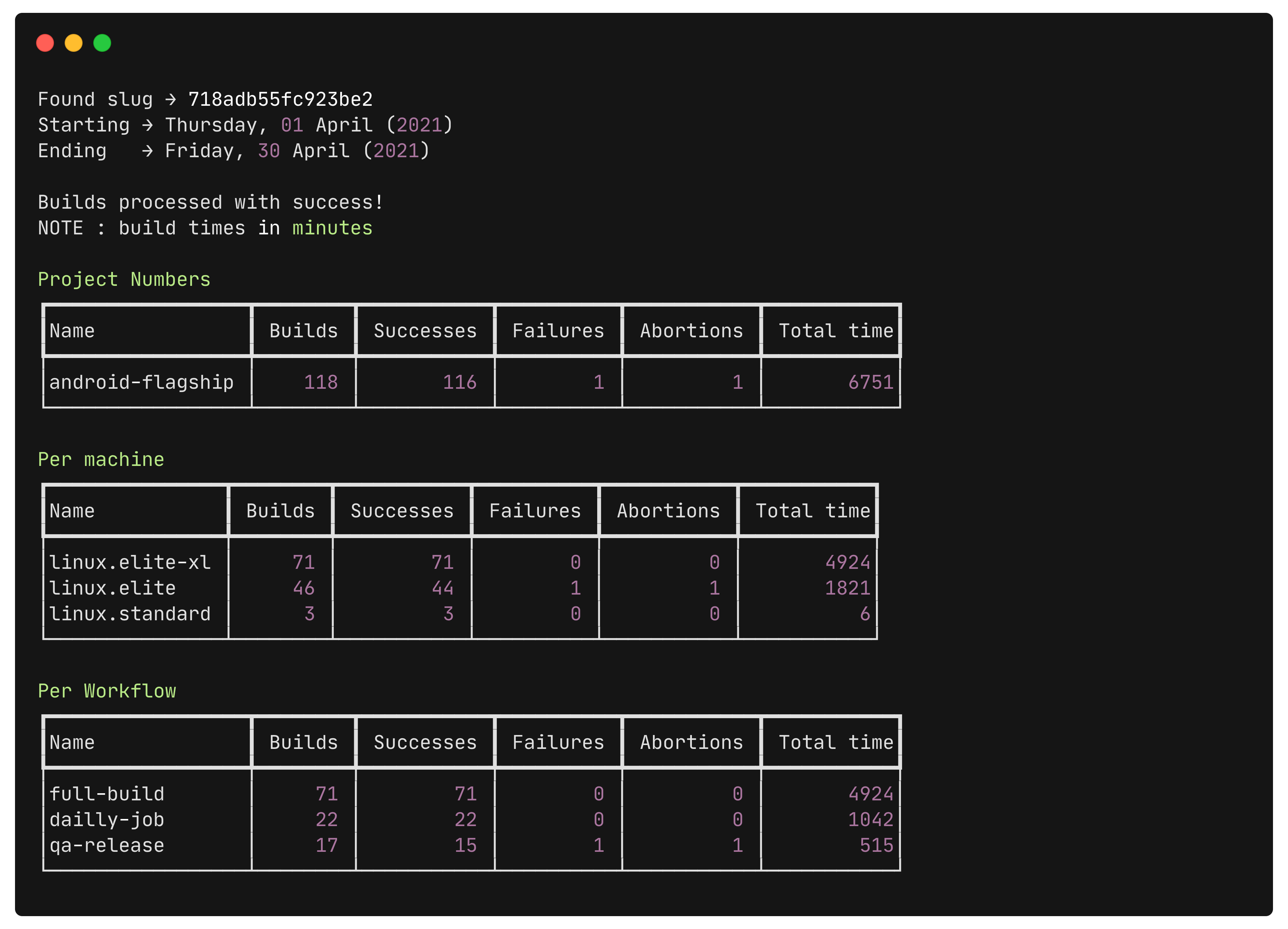Using Bitrise Reports
Getting started
Let’s say you want analyse numbers for the project android-flagship, learning from builds that ran during April of 2021. You’ll firstly need a Bitrise Personal Access Token for that. Note you must be a member in the project you want to analyse.
By running
$> bitrise-reports \
--token=$BITRISE_PAT_TOKEN \
--app=android-flagship \
--starting=2021-04-01 \
--ending=2021-04-30
you should get something like that on your CLI

which is a simple overview of what happened.
Let’s say now that you want to learn about how much time you are spending with queued builds.
You can run then
$> bitrise-reports \
--token=$BITRISE_PAT_TOKEN \
--app=android-flagship \
--starting=2021-04-01 \
--ending=2021-04-30 \
--detailed-timing
and get a report like this one

Last but not least, suppose you want to learn about execution status for all your Workflows that you run for events in your master branch (eg, push or a scheduled build).
You can run
$> bitrise-reports \
--token=$BITRISE_PAT_TOKEN \
--app=android-flagship \
--starting=2021-04-01 \
--ending=2021-04-30 \
--target-branch=master \
--detailed-builds
and get a report like about that too

Command line interface
The complete list of CLI options:
| Option | Details | Required |
|---|---|---|
| token | Personal access token for Bitrise API | Yes |
| app | The title of your app in Bitrise | Yes |
| starting | Starting date in the target time frame | Yes |
| ending | Ending date in the target time frame | Yes |
| detailed-builds | Details all statuses (success, failure and abortion) for builds | No |
| detailed-timing | Details timing (queued, running, total execution) for builds | No |
| emulate-velocity | Estimate Bitrise Velocity credits consumed | No |
| target-branch | Filters build by Git branch | No |
| report-style | The style of report you want | No |
where
startingandendingfollow YYYY-MM-DD conventionreport-styleaccepts stdout (default), json or exceldetailed-timingis a CLI flagdetailed-buildsis a CLI flagemulate-velocityis a CLI flag
If you opt-in for a specific report style, the corresponding file - bitrise-metrics.json or bitrise-metrics.xlsx - will be written in the same folder you are runnint bitrise-reports.
Running with Docker
Given the current definition for the Container Image, all the previous examples are straitghtforward to run on top of Docker:
$> docker run --rm ghcr.io/dotanuki-labs/bitrise-reports \
--token=$BITRISE_PAT_TOKEN \
--app=android-flagship \
--starting=2021-04-01 \
--ending=2021-04-30 \
--detailed-builds
When exporting reports (JSON or Excel) you should mount your current path upon Container’s workdir
$> docker run --rm -v "${PWD}:/reports" ghcr.io/dotanuki-labs/bitrise-reports \
--token=$BITRISE_PAT_TOKEN \
--app=android-flagship \
--starting=2021-04-01 \
--ending=2021-04-30 \
--report-style=excel